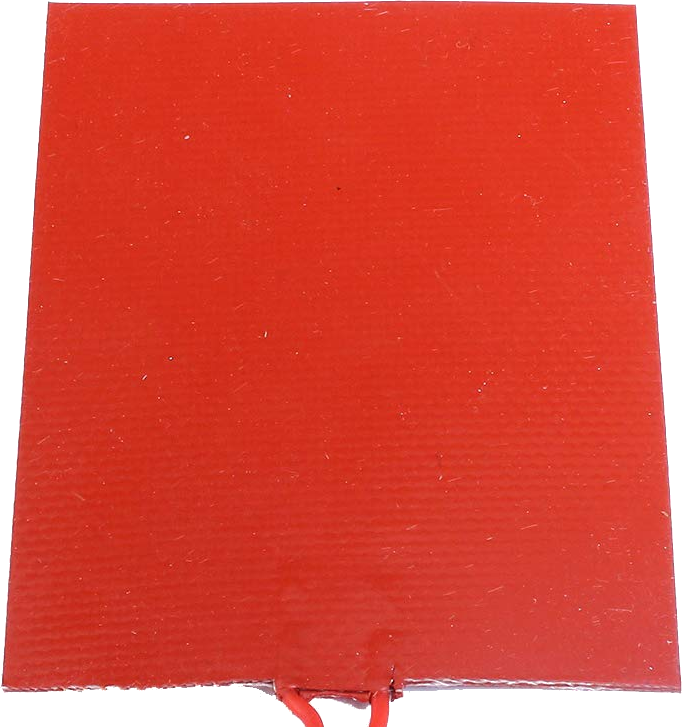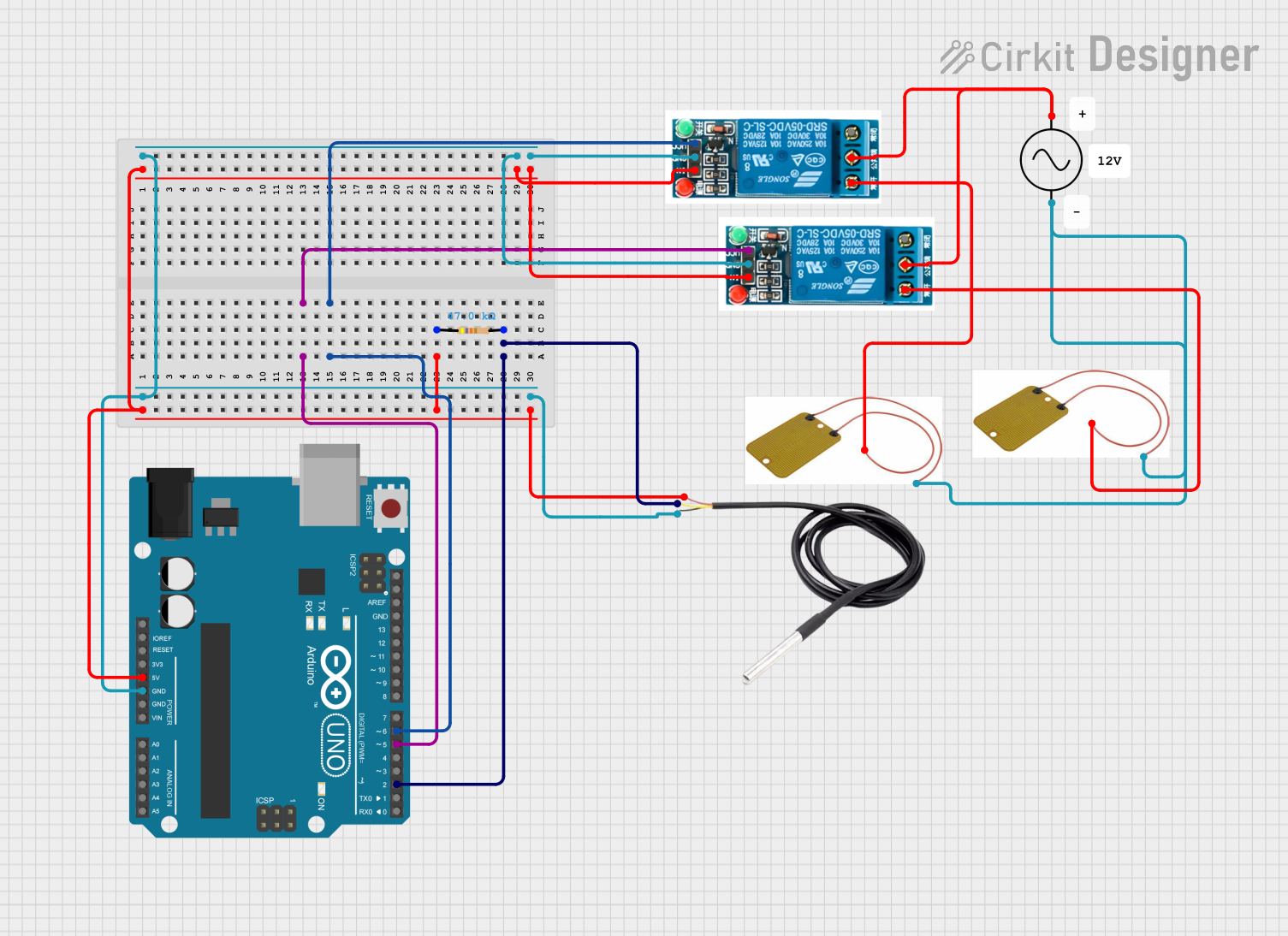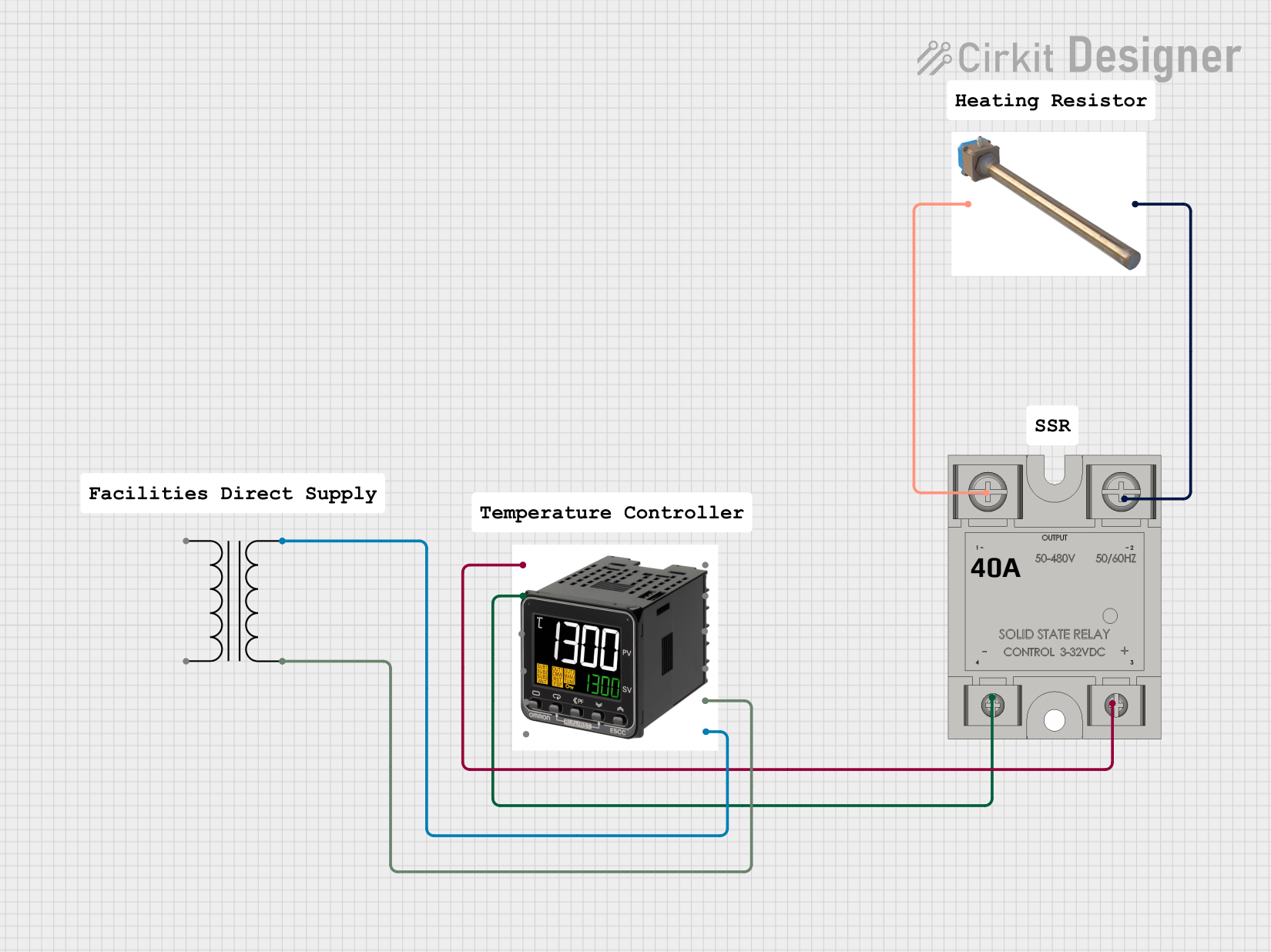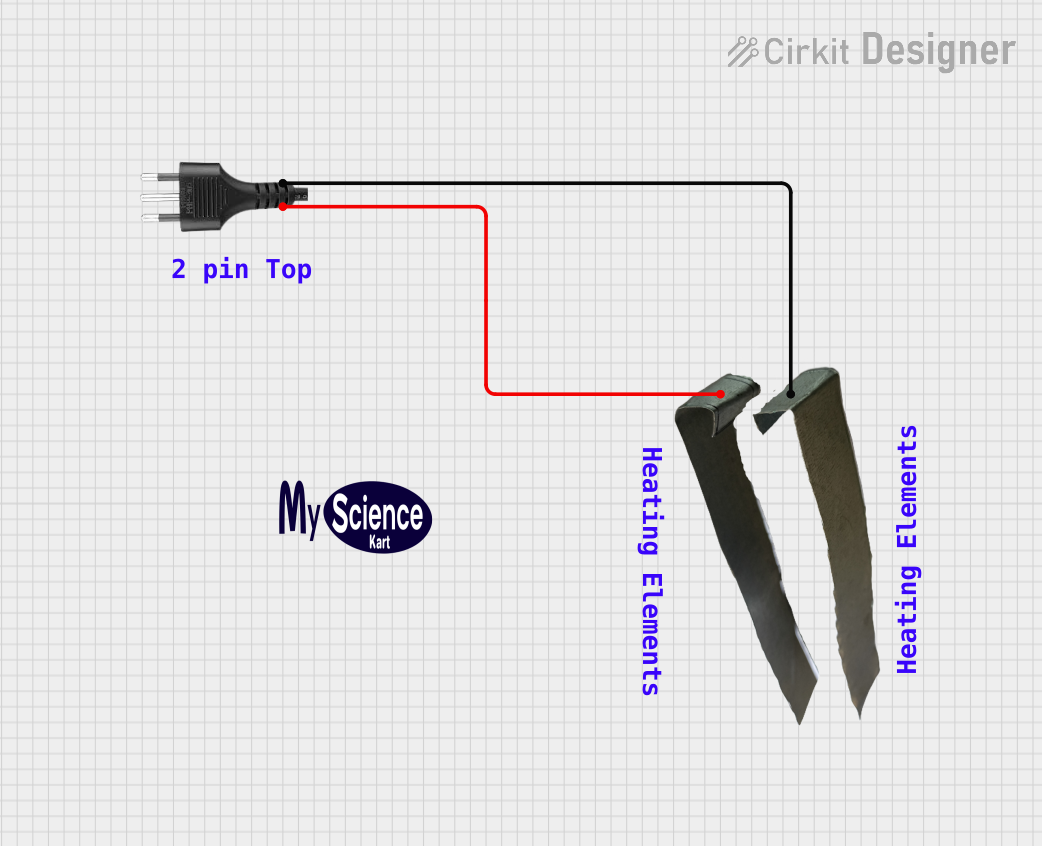
How to Use Silicone Heater Mat: Examples, Pinouts, and Specs

 Design with Silicone Heater Mat in Cirkit Designer
Design with Silicone Heater Mat in Cirkit DesignerIntroduction
The Silicone Heater Mat, manufactured by Icstation, is a flexible heating element designed to provide uniform heat distribution. Made from durable silicone rubber, this heater mat is ideal for applications requiring consistent and reliable heating. Its flexibility allows it to conform to various surfaces, making it suitable for a wide range of industrial, commercial, and DIY projects.
Explore Projects Built with Silicone Heater Mat

 Open Project in Cirkit Designer
Open Project in Cirkit Designer
 Open Project in Cirkit Designer
Open Project in Cirkit Designer
 Open Project in Cirkit Designer
Open Project in Cirkit Designer
 Open Project in Cirkit Designer
Open Project in Cirkit DesignerExplore Projects Built with Silicone Heater Mat

 Open Project in Cirkit Designer
Open Project in Cirkit Designer
 Open Project in Cirkit Designer
Open Project in Cirkit Designer
 Open Project in Cirkit Designer
Open Project in Cirkit Designer
 Open Project in Cirkit Designer
Open Project in Cirkit DesignerCommon Applications and Use Cases
- 3D Printing: Used as a heated bed to prevent warping of printed objects.
- Laboratory Equipment: Maintains consistent temperatures for experiments.
- Food and Beverage: Keeps food warm or prevents liquids from freezing.
- Industrial Processes: Provides localized heating for machinery or components.
- DIY Projects: Custom heating solutions for personal or experimental use.
Technical Specifications
The following table outlines the key technical details of the Silicone Heater Mat:
| Parameter | Value |
|---|---|
| Material | Silicone Rubber |
| Voltage | 12V, 24V, or 110V (varies by model) |
| Power Rating | 50W to 1000W (model-dependent) |
| Maximum Temperature | 200°C (392°F) |
| Thickness | 1.5mm to 2mm |
| Heating Uniformity | ±5% |
| Adhesive Backing | Optional (varies by model) |
| Wire Length | 1 meter (standard) |
Pin Configuration and Descriptions
The Silicone Heater Mat typically comes with two wires for power input. The configuration is as follows:
| Wire Color | Function | Description |
|---|---|---|
| Red | Positive (+) | Connect to the positive terminal of the power supply. |
| Black | Negative (-) | Connect to the negative terminal of the power supply. |
Note: Some models may include a built-in thermistor or temperature sensor. Refer to the specific product datasheet for additional wiring details.
Usage Instructions
How to Use the Silicone Heater Mat in a Circuit
- Power Supply: Ensure the power supply matches the voltage and power rating of the heater mat. For example, use a 12V DC power supply for a 12V heater mat.
- Mounting: Secure the heater mat to the desired surface. If the mat includes adhesive backing, peel off the protective layer and press the mat firmly onto the surface. For non-adhesive models, use clamps or high-temperature tape.
- Wiring: Connect the red wire to the positive terminal and the black wire to the negative terminal of the power supply.
- Temperature Control: For precise temperature regulation, connect the heater mat to a thermostat or temperature controller. If the mat includes a built-in thermistor, wire it to the controller as per the manufacturer's instructions.
- Testing: Power on the circuit and monitor the temperature to ensure proper operation.
Important Considerations and Best Practices
- Avoid Overheating: Always use a temperature controller to prevent the mat from exceeding its maximum temperature.
- Surface Preparation: Ensure the mounting surface is clean and free of debris for optimal heat transfer.
- Insulation: For improved efficiency, consider adding insulation around the heater mat to minimize heat loss.
- Safety: Do not fold or crease the mat, as this may damage the heating element. Avoid exposing the mat to sharp objects or chemicals.
Example: Using the Silicone Heater Mat with an Arduino UNO
To control the heater mat with an Arduino UNO, you can use a relay module and a temperature sensor (e.g., DS18B20). Below is an example code snippet:
#include <OneWire.h>
#include <DallasTemperature.h>
// Pin configuration
const int relayPin = 7; // Relay module connected to digital pin 7
const int tempSensorPin = 2; // DS18B20 data pin connected to digital pin 2
OneWire oneWire(tempSensorPin);
DallasTemperature sensors(&oneWire);
void setup() {
pinMode(relayPin, OUTPUT);
digitalWrite(relayPin, LOW); // Ensure relay is off initially
Serial.begin(9600);
sensors.begin();
}
void loop() {
sensors.requestTemperatures(); // Request temperature readings
float currentTemp = sensors.getTempCByIndex(0); // Get temperature in Celsius
Serial.print("Current Temperature: ");
Serial.println(currentTemp);
// Turn on the heater if temperature is below 50°C
if (currentTemp < 50.0) {
digitalWrite(relayPin, HIGH); // Activate relay
} else {
digitalWrite(relayPin, LOW); // Deactivate relay
}
delay(1000); // Wait 1 second before the next reading
}
Note: Ensure the relay module is rated for the voltage and current of the heater mat. Use proper heat sinks and safety precautions when working with high-power devices.
Troubleshooting and FAQs
Common Issues and Solutions
Heater Mat Not Heating:
- Cause: Incorrect wiring or insufficient power supply.
- Solution: Verify the wiring connections and ensure the power supply matches the voltage and power rating of the mat.
Uneven Heating:
- Cause: Poor surface contact or damaged heating element.
- Solution: Ensure the mat is securely mounted to a flat surface. Inspect for physical damage.
Overheating:
- Cause: Lack of temperature control.
- Solution: Use a thermostat or temperature controller to regulate the temperature.
Adhesive Fails to Stick:
- Cause: Dirty or uneven surface.
- Solution: Clean the surface thoroughly before mounting the mat. Use high-temperature tape if necessary.
FAQs
Can I cut the Silicone Heater Mat to a custom size?
- No, cutting the mat will damage the internal heating element and render it unusable.
Is the mat waterproof?
- The silicone material is water-resistant, but the mat should not be submerged in water unless explicitly stated by the manufacturer.
Can I use the mat without a temperature controller?
- It is not recommended, as this may lead to overheating and damage to the mat or surrounding components.
What is the lifespan of the Silicone Heater Mat?
- With proper use and maintenance, the mat can last several years. Avoid exceeding the maximum temperature and follow the manufacturer's guidelines for best results.